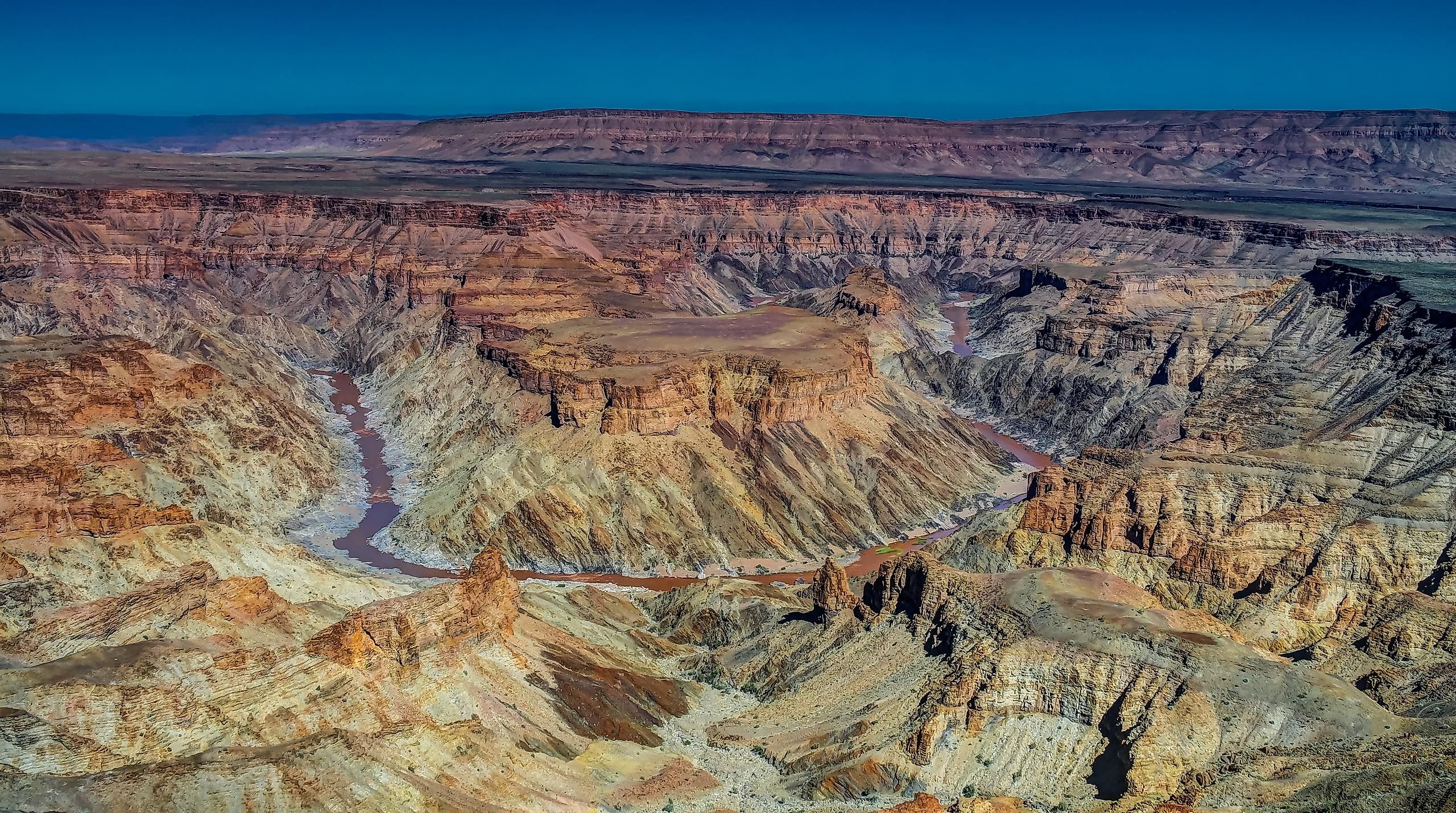
Fish River
First discovered by European settlers but named by the Khoi, Fish River resides in southern Namibia and cuts a gorge through a plateau of rugged, worn-down red stone. It is 1,000 to 2,300 feet deep and empties into the Orange River. Stretching for 375 miles, it is the longest internal river system in Namibia. Around 650 million years ago, the Earth’s surface cracked and shifted, forming the canyon. The shift of the land speared the formation of Fish River as we know it, with its drought-resistant terrain and succulents.
Due to the dry and hot climate, water flow usually only happens in March and April. From April to June, the environment is lucky if it sees even a trickle of moisture. However, it contains two majestic waterfalls that can be admired during the rainy season.
The Course Of The Fish River
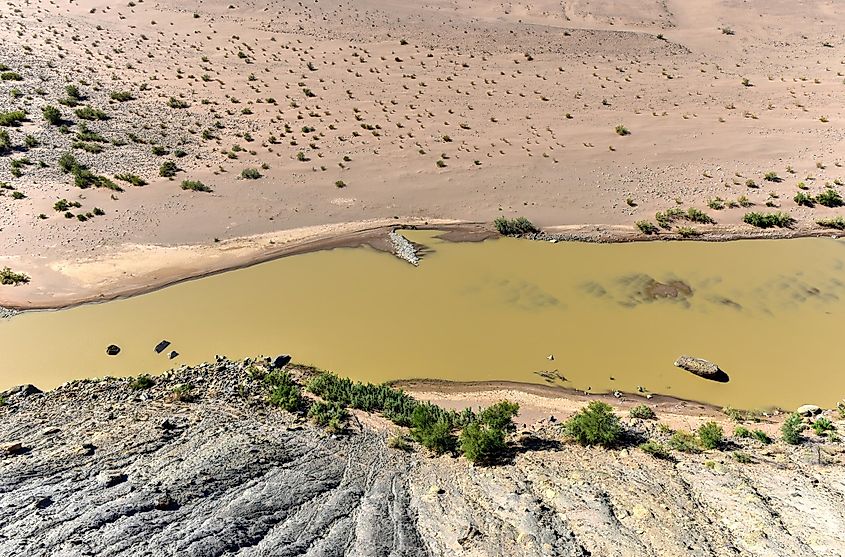
While some rivers stem from other bodies of water, Fish River starts in the Naukluft Mountains. From there, the water flows about 93 miles to enter Mariental’s Hardap Dam. Looming 1,000 meters over the surrounding land, this mountain range is named one of the most interesting places in Namibia due to its rich history and environment. It is known for its hiking trails, especially the Waterkloof Trail, where people view the rock pools (they can even swim in them). These rock pools then drain into the Fish River.
The flow of Fish River eventually joins Orange River about 43 miles south. Orange River is one of the longest in the continent and the Tropic of Capricorn and streams at a high altitude in Lesotho Highlands. While it is close to the Indian Ocean (125 miles away), it flows west into the Atlantic Ocean for 1,300 miles.
While Fish River eventually meets the Atlantic Ocean, a prominent river flows from it too - the Great Brak River. It resides north and flows through a coastal village consisting mostly of lagoons. To the east, Fish River’s tributaries include Baavians and Kat Rivers. Baviaans eventually meets the Kouga River, then feeds into Churchill and Impofo Dams. The dam supplies the Nelson Mandela Metropolitan area with 70% of its water source, with Baavians providing 35 to 45 million m3 annually. Kat River is 93 miles long and flows through Kat River Valley, draining into Winterberg, Eastern Cape Province, South Africa.
Climate and Geology
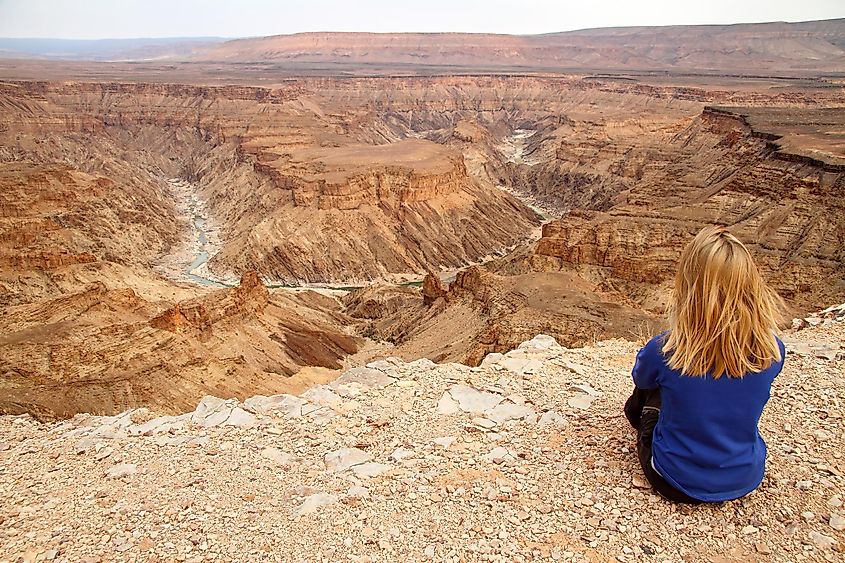
Fish River is a scorcher. Its summers are unforgiving, with temperatures reaching 86F to 104F and over during the day. Even though Fish River gets plenty of rain during the summer, it does not cool down, with the moisture building a thick mugginess in the air. It’s no surprise, as 60% to 70% of the rainfall comes from thunderstorms. Thunderstorm season occurs in the months of October to March. The storms and precipitation are volatile, and the area can expect anywhere from 50 to 100 mm of rain each year.
While the winter season is more refreshing, the temperatures are not cool. The area can expect temperatures to sit at 66F to 77F. Unlike summer, which carries humidity and moisture, Fish River winters are dry.
Known for its dramatic canyon landscape, sandstone, shale, and lava stone predominately makeup Fish River. About 1.8 million years ago, 1,112F temperatures morphed the rocks, causing them to crystallize. The result? The formation of Fish River’s bedrock.
Ecosystem
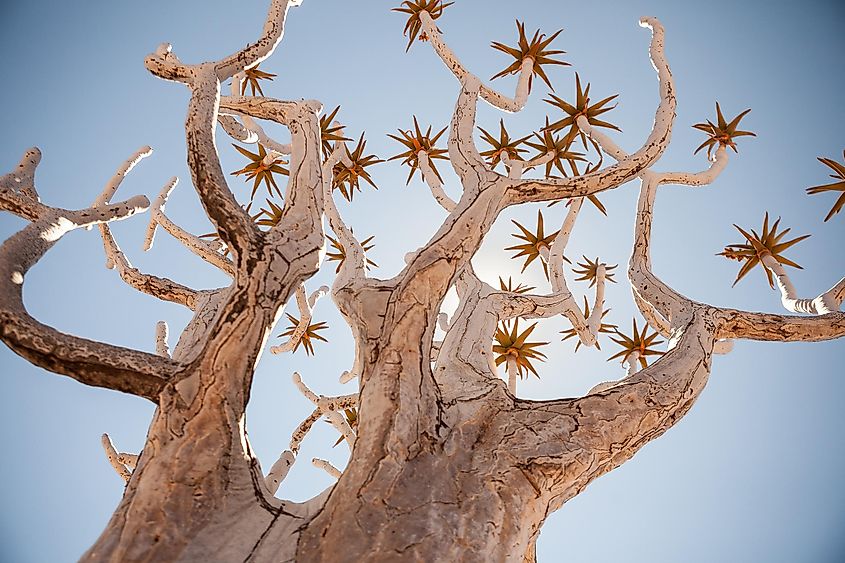
While people like to visit Fish River on vacation, there is sparse flora and fauna due to the balmy temperatures. However, this does not mean this area is completely devoid of life. Plants in this area are typically drought and sunlight resistant, so you can find palm trees, ebony trees, and camelthorn. As for animals, smaller beings like birds flit about, but they often blend in with the scenery, so one should keep a close eye out. Maybe you will have a chance to spot an eagle or a yellow-rumped eremomela. In the canyon, leopards, mountain zebras, antelope, and kudu make their home.
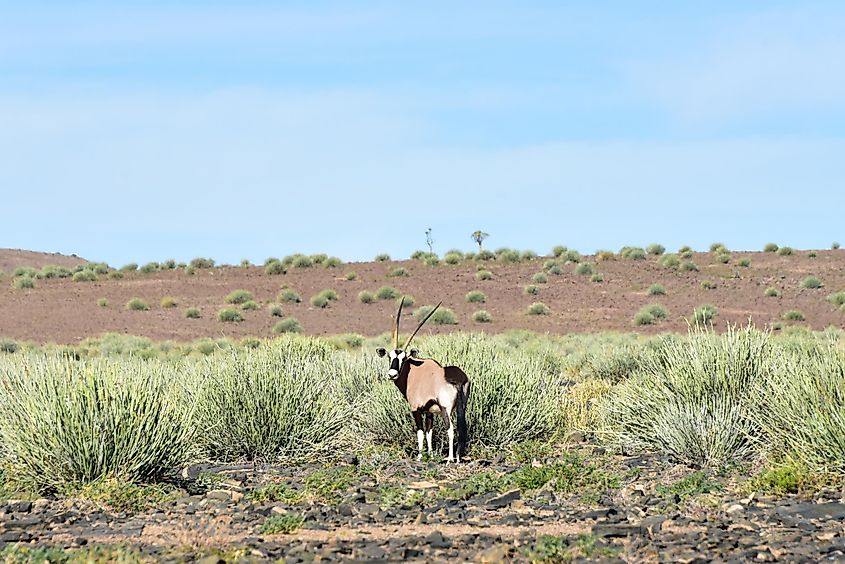
The Fish River offers a surreal landscape to those lucky enough to visit it. Despite its ruggedness, there is a sense of beauty like no other in this riverine landscape. Hence, it is no surprise that many travel to this destination to catch a glimpse of the Fish River or document their memories as photographs in this surreal landscape.











